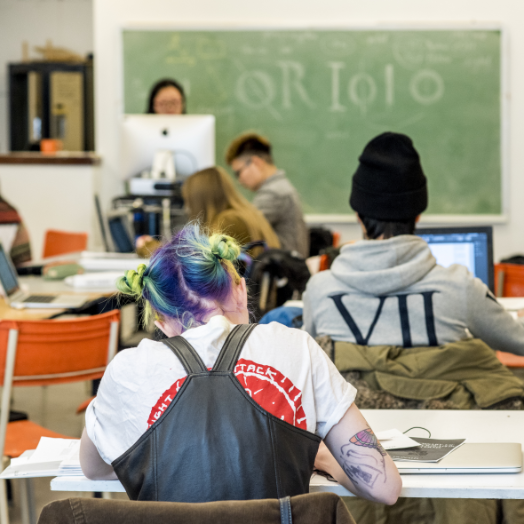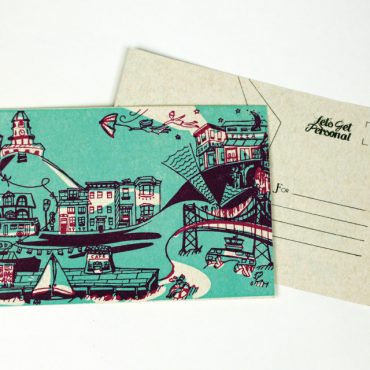bdes, interdisciplinary DESIGN
NSCAD offers a distinctive approach to design education with its interdisciplinary curriculum. This program equips students with the skills and knowledge necessary to engage in a wide range of design outcomes, spanning from print and screen to products and services. Embracing a diverse and collaborative approach, the program encourages the development of critical thinking and visual skills, enabling students to better embody the mindset and practices associated with the versatility of designers today.��
Division: Design
Degree: Bachelor of Design
Program: Major in Interdisciplinary Design��
Program Length: 4 years (see Degree Requirements)
Campus: North Block, Fountain Campus
Admission Deadline: March 1 for September; October 1 for January

NSCAD University’s Interdisciplinary Design major is a four-year program dedicated to exploring a diverse range of products and services. The curriculum integrates an in-depth understanding of people, technology, and aesthetics to tackle contemporary social and environmental challenges. Supported by a committed faculty and industry professionals, students will develop a comprehensive skill set encompassing design thinking methodologies, visualization tools, user experiences, and production processes.��
Throughout the program, students will engage in the creation of designs spanning graphic posters, logos, books, interactive websites, apps, animations, as well as physical games, packaging, and exhibits. By emphasizing design thinking, students will cultivate the ability to communicate and solve problems across various media and contexts. The curriculum includes specific course pathways for students to explore at a deeper level typography and illustration, digital and physical prototyping, and user interface and experience design (UI/UX).��
Graduates of the BDes program have forged successful careers, spanning large design and creative consultancies with multidisciplinary teams, to smaller, innovative startups where versatility in design is essential. Many of our graduates also choose the path and the flexibility of working as freelance designers and work as UI/UX designers, service designers, graphic designers, interaction designers, product designers, design strategists and illustrators.
The design skillsets developed at NSCAD also opens doors to a diverse range of opportunities in areas such as marketing, branding, strategy, public relations, policy, product development, and innovation management. These skills are applicable across a broad spectrum of industries now looking for designers, including finance, education, health, and government organizations. With a NSCAD design degree, the possibilities for your career are boundless.��
You will have access to a wide array of advanced equipment and facilities, managed by experienced and highly skilled technicians. The program is structured around six major design studios, providing opportunities for both instructor-led guidance and individual-directed research or study. A variety of electives are available to support the enhancement of your technical skills, broaden your knowledge, and delve into current issues and challenges. The program’s primary goal is to develop informed and versatile designers capable of addressing problems from graphic, interactive, product and spatial design perspectives.��
��
Creativity in Design Practice
Creativity in Design Practice: What is design? This foundation course brings together theory and practice to explore the spectrum of design, that embraces different approaches to designing that are rooted in principles and values. Through thinking, saying, doing and making students are introduced to creative practice from a design perspective.
Digital Illustration
Digital Illustration: In this course, students learn the concepts and practices of digital illustration, combined with hand drawing. Students learn that vector-based software can be a powerful tool in refining and enhancing a strong concept. Emphasis is placed on clean and consistent presentation of their work.
Intercultural Communication and Design
Intercultural Communication and Design: The global reach of design has created the expectation for designers to perform in collaborative, intercultural professional contexts. This course offers a critical exploration of intercultural competence as it intersects with semiotics, user-centred design, and the relationships between research and practice. Through course readings, hands-on projects, and writing, language is reframed as a key tool for ideation, creation, and reflection.
Designing Smart Objects
Almost every modern device that employs electricity – from personal devices like smartphones, to appliances like toasters and washing machines, to automobiles and industrial machinery and worldwide networks – has microcontrollers in common. These tiny computers make inexpensive sophisticated interfaces possible, connecting sensors, LEDs, LCDs to actuators, other microcontrollers and humans. This course introduces designers to the Arduino Integrated Design Environment. Students will learn how to develop programs on Arduino devices, how electricity works and how to connect and orchestrate these functions so that they make sense to users through UI/UX best practices.
Please visit the Academic Calendar for a description of all courses available during your undergraduate studies.



